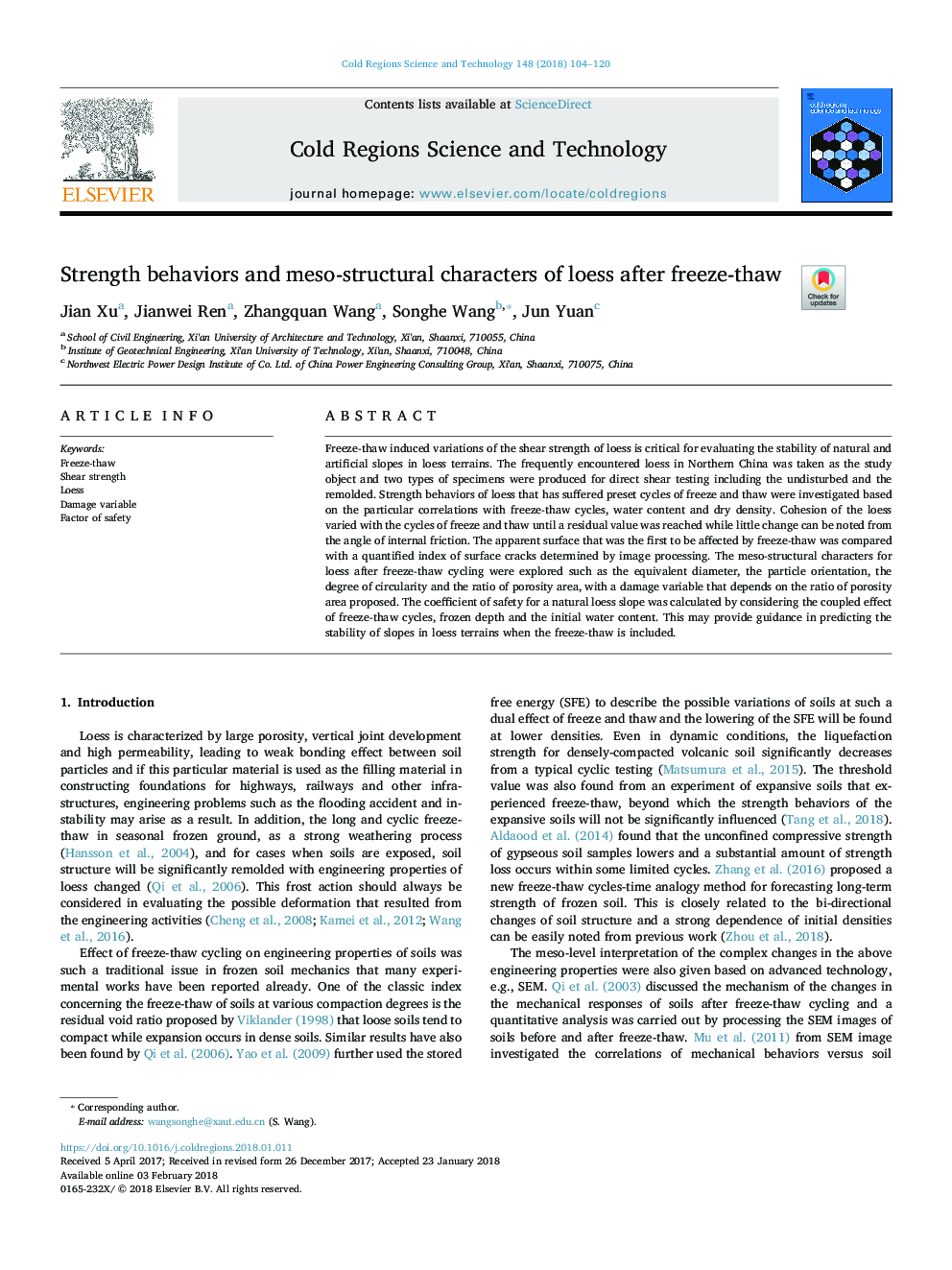| Article ID | Journal | Published Year | Pages | File Type |
|---|---|---|---|---|
| 8906543 | Cold Regions Science and Technology | 2018 | 17 Pages |
Abstract
Freeze-thaw induced variations of the shear strength of loess is critical for evaluating the stability of natural and artificial slopes in loess terrains. The frequently encountered loess in Northern China was taken as the study object and two types of specimens were produced for direct shear testing including the undisturbed and the remolded. Strength behaviors of loess that has suffered preset cycles of freeze and thaw were investigated based on the particular correlations with freeze-thaw cycles, water content and dry density. Cohesion of the loess varied with the cycles of freeze and thaw until a residual value was reached while little change can be noted from the angle of internal friction. The apparent surface that was the first to be affected by freeze-thaw was compared with a quantified index of surface cracks determined by image processing. The meso-structural characters for loess after freeze-thaw cycling were explored such as the equivalent diameter, the particle orientation, the degree of circularity and the ratio of porosity area, with a damage variable that depends on the ratio of porosity area proposed. The coefficient of safety for a natural loess slope was calculated by considering the coupled effect of freeze-thaw cycles, frozen depth and the initial water content. This may provide guidance in predicting the stability of slopes in loess terrains when the freeze-thaw is included.
Related Topics
Physical Sciences and Engineering
Earth and Planetary Sciences
Earth and Planetary Sciences (General)
Authors
Jian Xu, Jianwei Ren, Zhangquan Wang, Songhe Wang, Jun Yuan,
